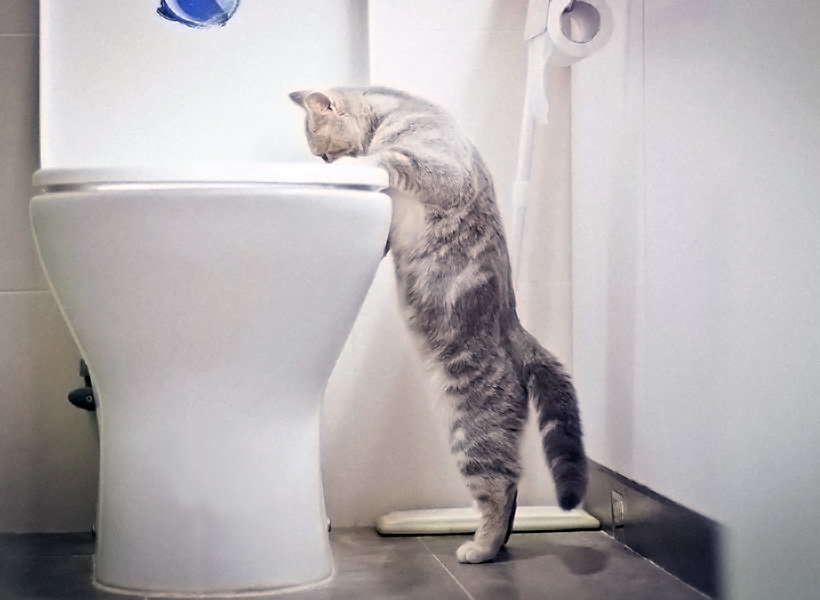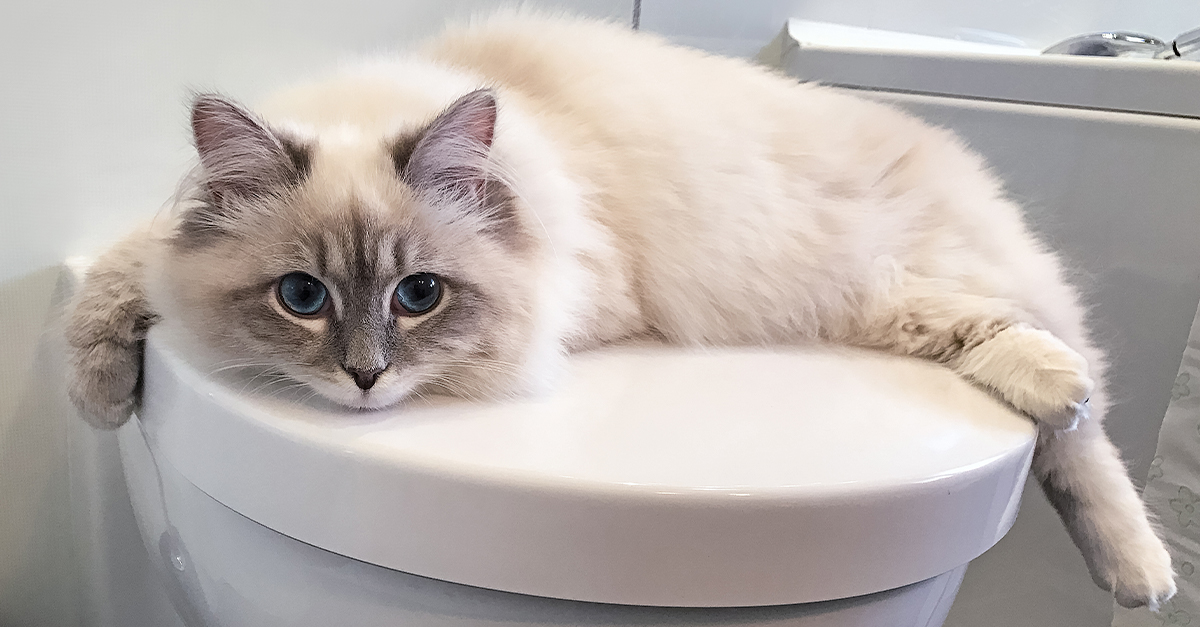The content further down pertaining to Should you flush animal waste down the toilet is without a doubt entertaining. Give it a go and draw your own results.

When it concerns dealing with waste, particularly animal waste, many people typically consider the convenient choice of flushing it down the commode. However, this seemingly simple solution can have major effects for the setting and public health. In this article, we'll explore why flushing animal waste down the toilet is a bad idea and provide alternative techniques for proper disposal.
Intro
Appropriate waste disposal is crucial for keeping ecological sustainability and public health. While it may appear harmless to purge animal waste down the bathroom, it can bring about numerous issues, both for the atmosphere and human health.
Risks of flushing pet waste
Ecological impact
Purging pet waste introduces dangerous germs and virus right into waterways, which can negatively affect marine ecosystems. These microorganisms can pollute water resources and injury marine life, disrupting delicate ecological communities.
Public health concerns
Animal waste contains damaging germs such as E. coli and Salmonella, which can present severe health and wellness dangers to people. Flushing animal waste down the commode can pollute water materials, resulting in the spread of diseases and infections.
Alternatives to flushing
Rather than purging pet waste down the toilet, there are numerous alternate disposal methods that are a lot more eco-friendly and sanitary.
Composting
Composting animal waste is an environmentally friendly method to take care of it. By composting, raw material is broken down into nutrient-rich soil, which can be used to feed gardens and plants.
Landfill disposal
Getting rid of pet waste in a garbage dump is an additional option. While not as eco-friendly as composting, it is a much safer alternative to flushing, as it avoids the contamination of water resources.
Pet garbage disposal systems
There are customized animal waste disposal systems available that safely and hygienically dispose of animal waste. These systems often utilize enzymes to break down waste and get rid of smells.
Steps to appropriate pet waste disposal
To make sure correct disposal of animal waste, comply with these actions:
Scooping and bagging waste
Frequently scoop and bag pet waste utilizing eco-friendly bags. This prevents waste from contaminating the atmosphere.
Utilizing assigned waste containers
Dispose of bagged pet waste in assigned waste containers, such as compost bins or here garbage dump containers. Stay clear of flushing it down the commode in all prices.
Cleaning up litter boxes and pet locations on a regular basis
On a regular basis clean can and animal areas to stop the accumulation of waste and bacteria. Use pet-safe cleansing products to keep hygiene.
Advantages of proper disposal approaches
Adopting proper disposal techniques for pet waste provides numerous benefits:
Decreased environmental pollution
Proper disposal methods decrease the risk of environmental pollution, safeguarding waterways and ecosystems from contamination
Decreased threat of water contamination.
By staying clear of flushing pet waste down the bathroom, the danger of water contamination is dramatically lowered, guarding public health.
Improved hygiene and hygiene
Correct disposal techniques advertise better cleanliness and health, creating a much safer atmosphere for both humans and pets.
Final thought
To conclude, flushing animal waste down the toilet is dangerous to the atmosphere and public health. By taking on alternate disposal approaches and following correct waste management techniques, we can reduce the unfavorable impact of pet waste and contribute to a cleaner, much healthier planet.
Why You Should Never Flush Cat Poop Down the Toilet
A rose by any other name might smell as sweet, but not all poop is created equal. Toilets, and our sewage systems, are designed for human excrement, not animal waste. It might seem like it couldn’t hurt to toss cat feces into the loo, but it’s not a good idea to flush cat poop in the toilet.
First and foremost, assuming your cat uses a litter box, any waste is going to have litter on it. And even the smallest amount of litter can wreak havoc on plumbing.
Over time, small amounts build up, filling up your septic system. Most litter sold today is clumping; it is made from a type of clay that hardens when it gets wet. Ever tried to scrape old clumps from the bottom of a litter box? You know just how cement-hard it can get!
Now imagine just a small clump of that stuck in your pipes. A simple de-clogger like Drano isn’t going to cut it. And that means it’s going to cost you big time to fix it.
For an amusing, graphic tale of what happens when you flush too much litter down the toilet all at once, take a few minutes to read Gene Weingarten’s 2017 Washington Post column “So that’s what happens when you flush cat litter down the toilet.”
Parasitic Contamination
Believe it or not, your healthy kitty may be harboring a nasty parasite. Only cats excrete Toxoplasma in their feces. Yet it rarely causes serious health issues in the cats that are infected. Most people will be fine too if infected. Only pregnant women and people with compromised immune systems are at risk. (If you’ve ever heard how women who are expecting are excused from litter cleaning duty, Toxoplasma is why.)
But other animals may have a problem if infected with the parasite. And human water treatment systems aren’t designed to handle it. As a result, the systems don’t remove the parasite before discharging wastewater into local waterways. Fish, shellfish, and other marine life — otters in particular — are susceptible to toxoplasma. If exposed, most will end up with brain damage and many will die.
Depending on the species of fish, they may end up on someone’s fish hook and, ultimately on someone’s dinner plate. If that someone has a chronic illness, they’re at risk.
Skip the Toilet Training
We know there are folks out there who like to toilet train their cats. And we give them props, it takes a lot of work. But thanks to the toxoplasma, it’s not a good idea.
Leave the toilet to the humans, and accept your future litter cleaning duty.

On a regular basis clean can and animal areas to stop the accumulation of waste and bacteria. Use pet-safe cleansing products to keep hygiene.
Advantages of proper disposal approaches
Adopting proper disposal techniques for pet waste provides numerous benefits:
Decreased environmental pollution
Proper disposal methods decrease the risk of environmental pollution, safeguarding waterways and ecosystems from contamination
Decreased threat of water contamination.
By staying clear of flushing pet waste down the bathroom, the danger of water contamination is dramatically lowered, guarding public health.
Improved hygiene and hygiene
Correct disposal techniques advertise better cleanliness and health, creating a much safer atmosphere for both humans and pets.
Final thought
To conclude, flushing animal waste down the toilet is dangerous to the atmosphere and public health. By taking on alternate disposal approaches and following correct waste management techniques, we can reduce the unfavorable impact of pet waste and contribute to a cleaner, much healthier planet.
Why You Should Never Flush Cat Poop Down the Toilet
A rose by any other name might smell as sweet, but not all poop is created equal. Toilets, and our sewage systems, are designed for human excrement, not animal waste. It might seem like it couldn’t hurt to toss cat feces into the loo, but it’s not a good idea to flush cat poop in the toilet.
First and foremost, assuming your cat uses a litter box, any waste is going to have litter on it. And even the smallest amount of litter can wreak havoc on plumbing.
Over time, small amounts build up, filling up your septic system. Most litter sold today is clumping; it is made from a type of clay that hardens when it gets wet. Ever tried to scrape old clumps from the bottom of a litter box? You know just how cement-hard it can get!
Now imagine just a small clump of that stuck in your pipes. A simple de-clogger like Drano isn’t going to cut it. And that means it’s going to cost you big time to fix it.
For an amusing, graphic tale of what happens when you flush too much litter down the toilet all at once, take a few minutes to read Gene Weingarten’s 2017 Washington Post column “So that’s what happens when you flush cat litter down the toilet.”
Parasitic Contamination
Believe it or not, your healthy kitty may be harboring a nasty parasite. Only cats excrete Toxoplasma in their feces. Yet it rarely causes serious health issues in the cats that are infected. Most people will be fine too if infected. Only pregnant women and people with compromised immune systems are at risk. (If you’ve ever heard how women who are expecting are excused from litter cleaning duty, Toxoplasma is why.)
But other animals may have a problem if infected with the parasite. And human water treatment systems aren’t designed to handle it. As a result, the systems don’t remove the parasite before discharging wastewater into local waterways. Fish, shellfish, and other marine life — otters in particular — are susceptible to toxoplasma. If exposed, most will end up with brain damage and many will die.
Depending on the species of fish, they may end up on someone’s fish hook and, ultimately on someone’s dinner plate. If that someone has a chronic illness, they’re at risk.
Skip the Toilet Training
We know there are folks out there who like to toilet train their cats. And we give them props, it takes a lot of work. But thanks to the toxoplasma, it’s not a good idea.
Leave the toilet to the humans, and accept your future litter cleaning duty.

Do you like reading about Don't Flush Your Pets Poo Down The Loo, Vet Warns? Make a review further down. We would be happy to hear your insights about this article. We hope to see you back again in the future. Do you know about somebody who is excited by 10 Things You Should Never Flush Down The Toilet? Why not promote it. I value reading our article about Don't Flush Your Pets Poo Down The Loo, Vet Warns.
Website